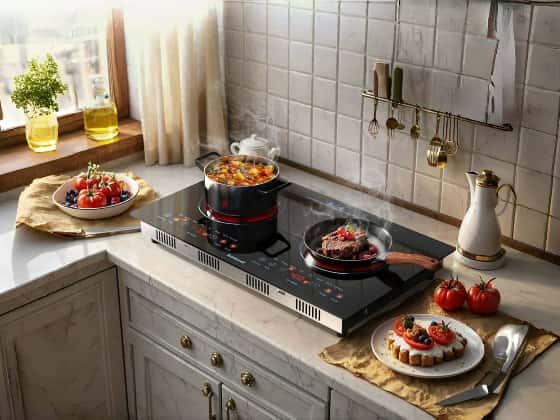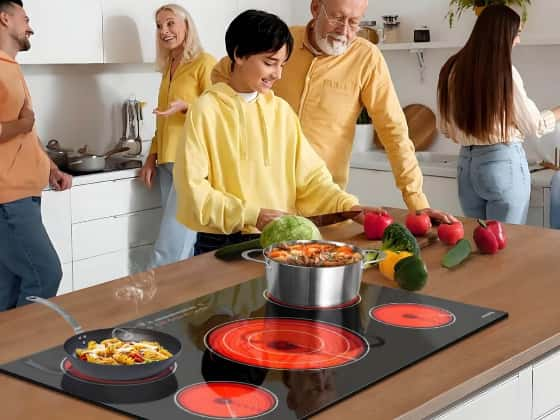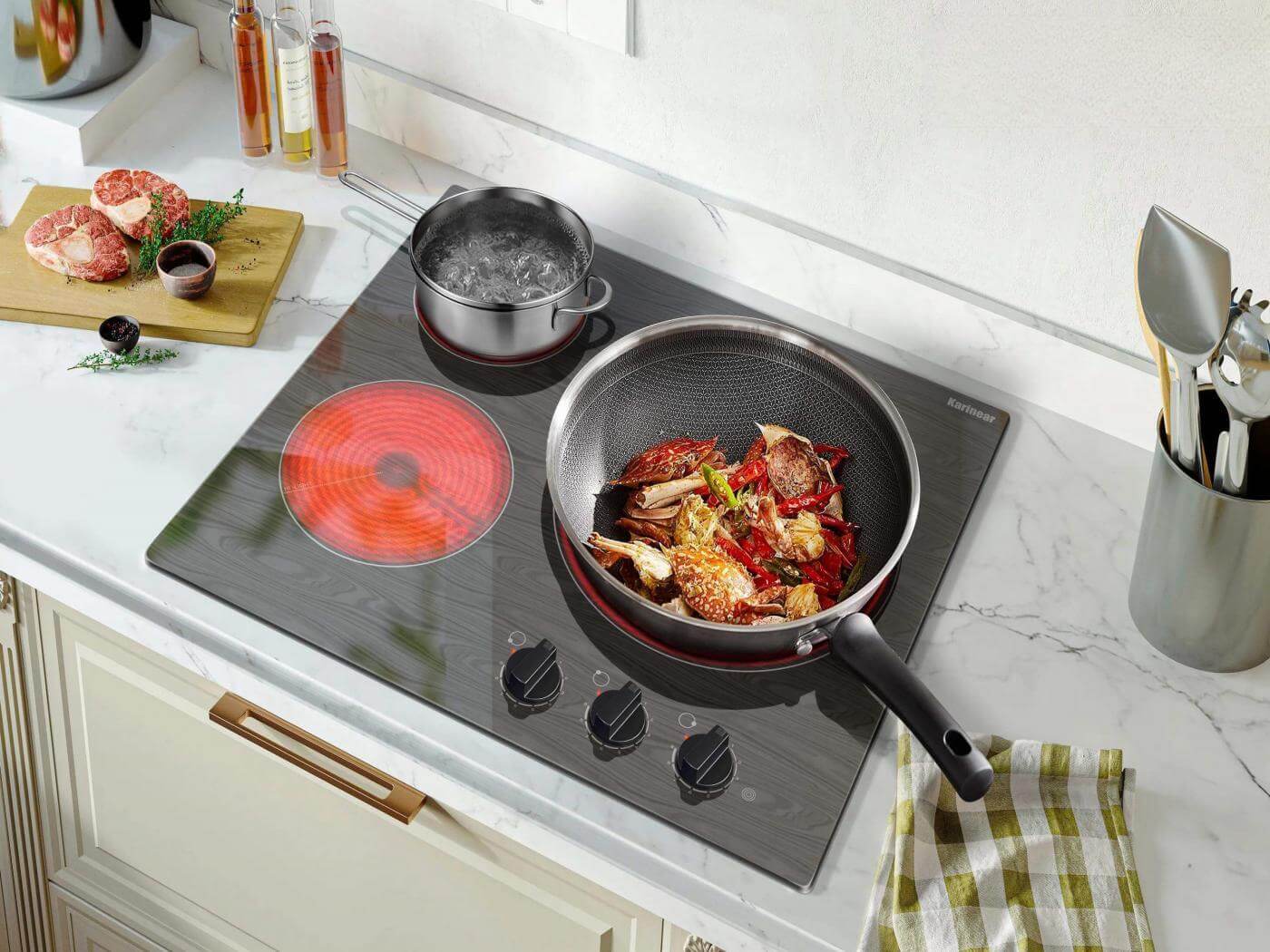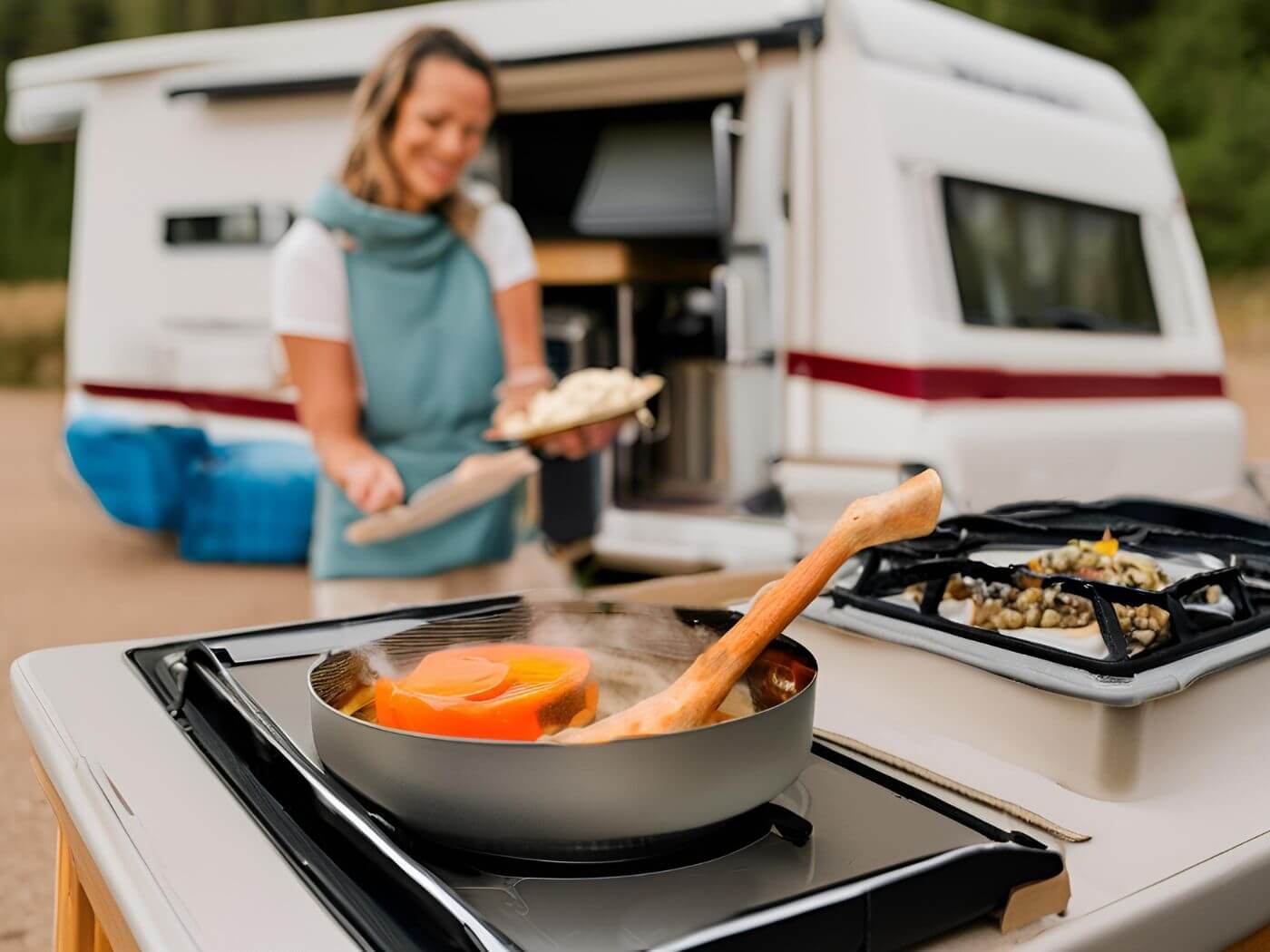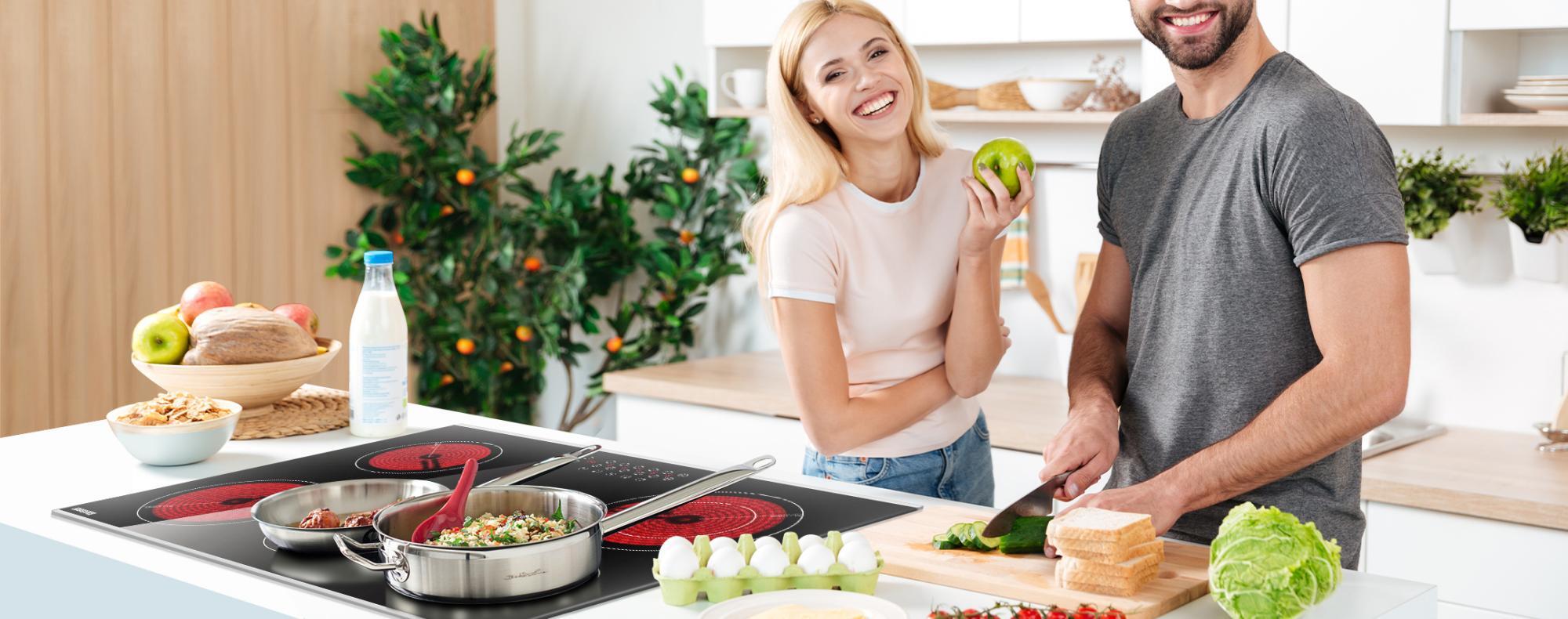
How electric stove tops work
Electric stove tops, also known as ceramic cooktop, are a popular choice for modern kitchens. They offer a sleek and stylish design, easy cleaning, and precise temperature control. At the heart of these appliances lies a complex system that converts electrical energy into heat, allowing us to cook our meals with ease.
The heating elements in electric stove tops are typically made of coiled metal wires or ribbon-like materials encased in a smooth glass-ceramic surface. When electricity flows through these elements, they generate heat through resistance, similar to how a light bulb produces light. This heat is then transferred to the cooking utensils placed on the surface, enabling us to prepare a wide range of dishes.
Exploring the differences between inner and outer rings
Many electric stove tops feature a unique design that incorporates both inner and outer rings on each burner. These rings serve different purposes and offer distinct advantages, allowing for greater flexibility and control during cooking.
The inner ring is typically smaller in diameter and is designed to provide concentrated heat for tasks that require intense, focused heating. This ring is ideal for tasks such as boiling water, searing meat, or cooking delicate dishes that require precise temperature control.
On the other hand, the outer ring is larger and covers a broader surface area. It is primarily used for tasks that require more even heat distribution, such as simmering sauces, cooking larger pots or pans, or maintaining a consistent temperature over a larger cooking surface.Understanding temperature variations in electric stove tops Learning how electric stove tops temperatures vary
While electric stove tops are designed to provide consistent and precise temperature control, it's important to understand that variations in temperature can still occur. These variations can be influenced by several factors, including:
Cookware Material and Size: The material and size of your cookware can affect how heat is distributed and retained. For example, thicker pots or pans may take longer to heat up but can maintain a more consistent temperature, while thinner cookware may heat up quickly but may also cool down faster.
Burner Size and Placement: The size and placement of the burner can impact the temperature distribution across the cooking surface. Larger burners may provide more even heating, while smaller burners may create hot spots or uneven heating patterns.
Power Settings: The power setting you choose can significantly affect the temperature of the cooking surface. Higher settings will produce more intense heat, while lower settings will provide gentler, more consistent heating.
Ambient Temperature: The ambient temperature in your kitchen can also influence the temperature of the cooking surface. Warmer environments may cause the surface to heat up faster, while cooler environments may result in slower heating.
Tips for managing temperature variations
Use the Right Cookware: Choose cookware that is designed specifically for use on electric stove tops. Look for pots and pans with flat, smooth bottoms that make full contact with the cooking surface, ensuring even heat distribution.
Rotate Cookware: Periodically rotate your cookware during the cooking process to expose different areas to the heat source, promoting even heating and preventing hot spots.
Adjust Power Settings: Pay attention to the power settings and adjust them as needed to maintain the desired temperature. Higher settings may be required for intense heating, while lower settings can provide more consistent, gentle heat.
Use Pot Holders or Trivets: Placing pot holders or trivets between the cookware and the cooking surface can help distribute heat more evenly and prevent hot spots.
Monitor Temperature Closely: Use a reliable oven thermometer or infrared thermometer to monitor the actual temperature of the cooking surface and make adjustments as needed.
Karinear 30 inch electric stove with temperature control features
The 30 inch electric stove rated total power 7100W, but it has 4 powerful burners.Each burner of this 30 inch electric stove has 9 power levels, providing different temperatures to meet the temperature needs of different foods, perfect for braise, fry, deep fry, stir-fry, roast, and more.
Conclusion
Understanding the differences between the inner and outer rings on electric stove tops is crucial for achieving optimal cooking results. By utilizing the concentrated heat of the inner ring and the even heat distribution of the outer ring, you can tackle a wide range of cooking tasks with precision and control.Embrace the versatility and precision of electric stove tops, and elevate your cooking game to new heights. With a little knowledge and the right tools, you'll be well on your way to becoming a master of temperature control in the kitchen.

